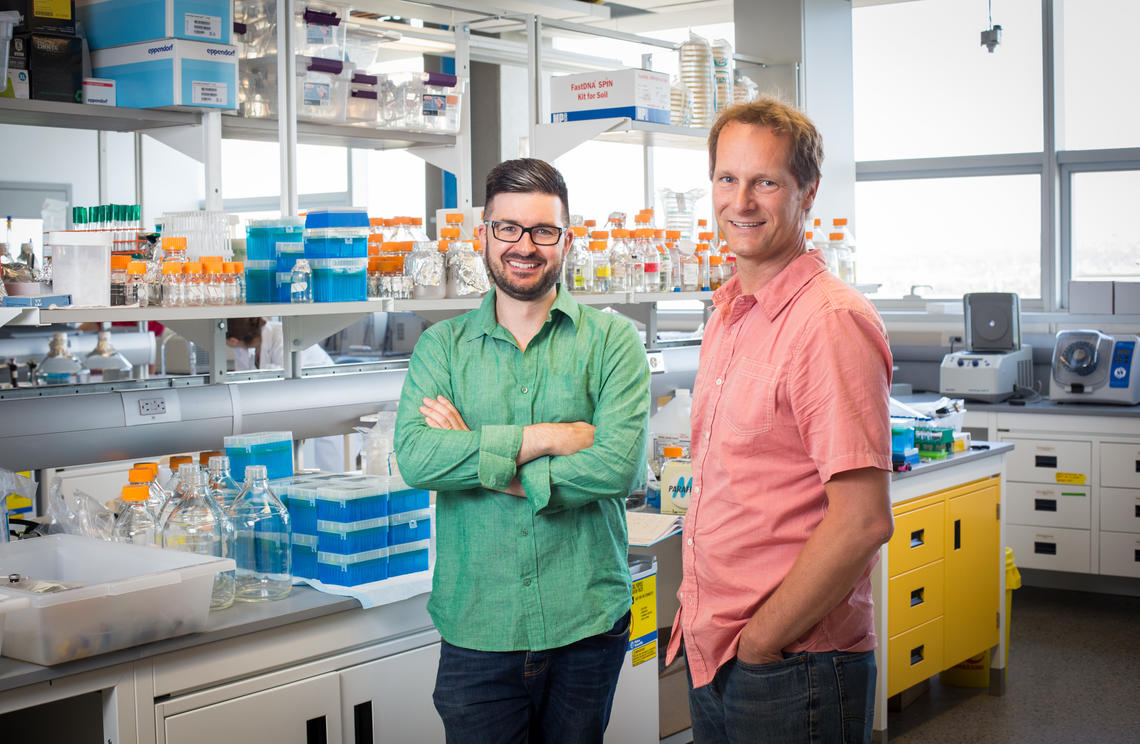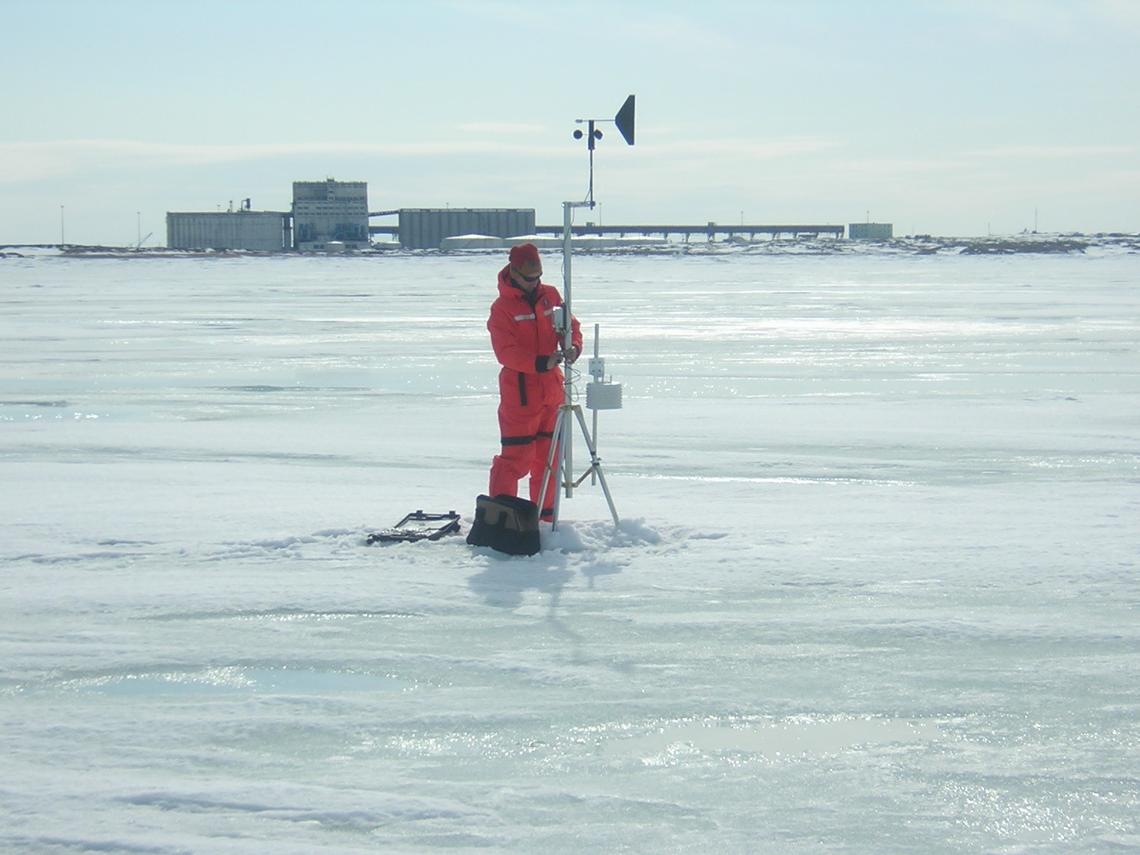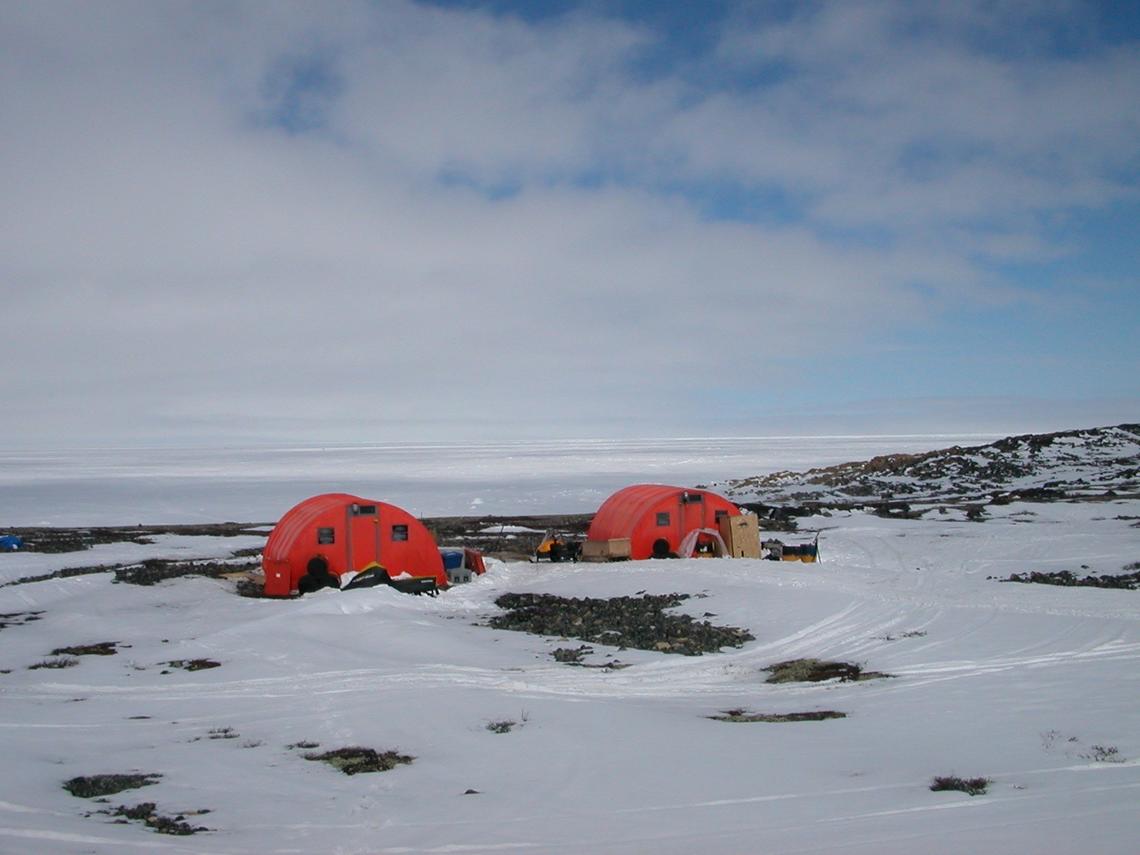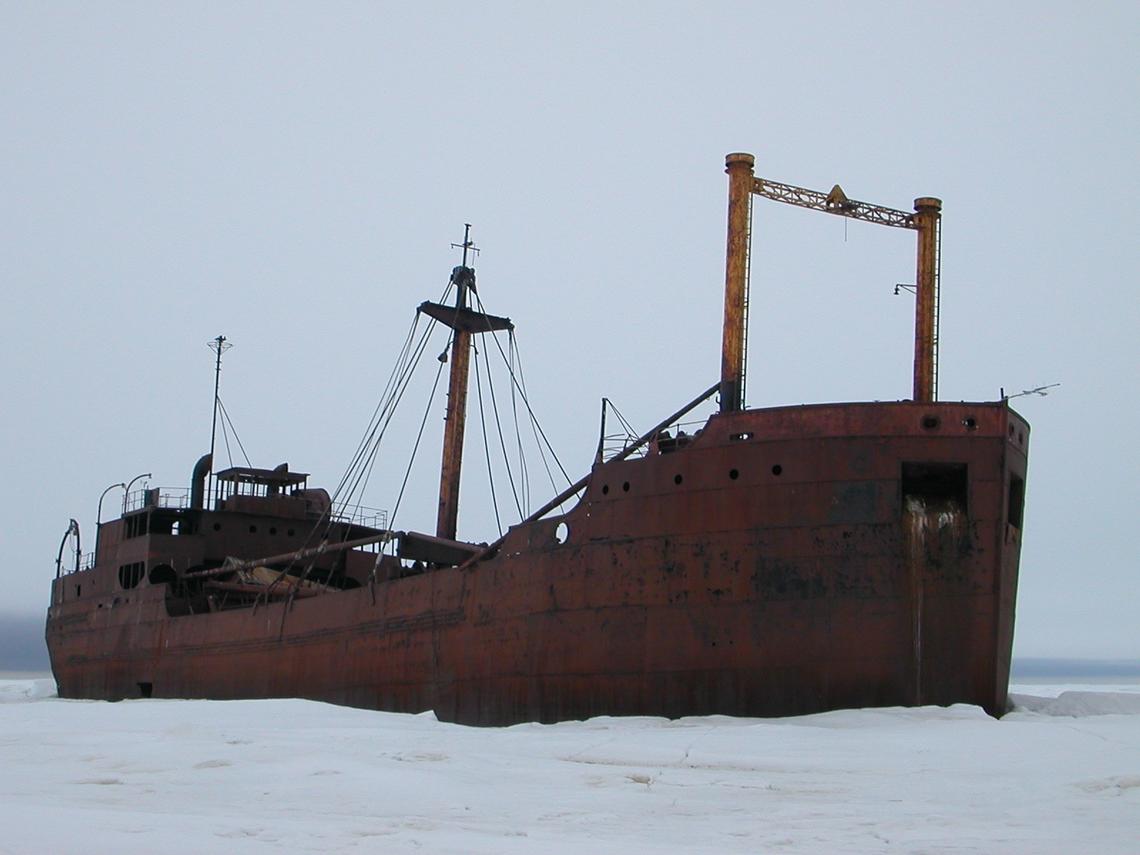July 15, 2015
New Arctic research station expands oil spill studies

Casey Hubert, left, and John Yackel will work with about 170 researchers, including Brent Else.
Adrian Shellard
News of an oil spill typically conjures images of blackened sea birds in the Gulf of Mexico, or an expanding slick in the Gulf of Alaska or North Sea.
What doesn’t usually come to mind is oil spreading in near-freezing water or trapped under Arctic sea ice, which is exactly the scenario scientists from around the world — including several from the University of Calgary — can now study, thanks to a newly funded facility in Churchill, Manitoba.
The federal government recently announced funding for the $32-million Churchill Marine Observatory through the Canada Foundation for Innovation. The University of Manitoba is leading this unique research facility in collaboration with the University of Calgary.
A first-of-its-kind facility in the circumpolar Arctic, the Churchill Marine Observatory (CMO) will be located along the west coast of Hudson Bay adjacent to Canada’s only arctic deep-water port. Research teams working at CMO, and in their resident labs, will develop ways of detecting oil in ice-covered waters, study oil's impact on the ecosystem, and develop technologies for cleaning up arctic waters in case of a spill.
"The University of Calgary brings valuable expertise in bioremediation, sea ice remote sensing and in understanding the nature of CO2 exchange under extreme arctic conditions,” says Ed McCauley, vice-president (research). “The broad scientific perspectives, as well as those from industry — that will come together at the Churchill Marine Observatory — will guide the decisions about how best to manage our energy resources while protecting sensitive ecosystems.”
Researching extraction, oil spill detection and remediation
This timely coming together has become increasingly urgent as climate change has opened up the possibility of oil exploration and shipping in parts of the Arctic. That geography, however, presents several unique and, to date, largely under-researched challenges involving extraction, oil spill detection and remediation.
For one, oil behaves differently depending on the temperature of the water and the presence and thickness of sea ice. As well, without sunlight and with typically heavy cloud cover, an oil spill could be hard to detect and monitor in the Arctic using traditional techniques. There is also very limited knowledge of how marine ecosystems will be affected by the presence, composition and dispersion of oil, and the chemicals used for cleanup.
Casey Hubert, associate professor in biological sciences at the University of Calgary and Campus Alberta Innovation Program Chair in Geomicrobiology, will lead the CMO research team studying hydrocarbon biodegradation, where some of the CFI funding will be allocated to his lab at the University of Calgary, to advance this work.
“We are interested in microbial communities in the marine environment that are capable of biodegrading oil compounds,” Hubert says. “It is valuable to be able to add the sea ice dimension to this work at a mesocosm scale, which falls in between the lab scale and full-blown field scale.”

Researchers install meteorological equipment at the future home of the Churchill Marine Observatory.
Brent Else
Massive covered sea ice tanks on stilts
The nationally funded CMO will gather more than 170 researchers from eight national and international universities, as well as government departments and private-sector partners. The research facility will be equipped with two sea ice tanks, allowing for research of Arctic oil spill simulations. Essentially massive above-ground swimming pools, the tanks will sit on stilts and be protected by a retractable roof. An enormous tube will draw in real seawater, and the tanks will be equipped to freeze in winter.
Oil can be poured on the ice in one tank, while the other acts as a control. An industrial-sized fume hood will contain all the material released when the oil is burned off, an oil spill response technology that can also be investigated at CMO.
“Bioremediation in the cold Arctic and in the presence of sea ice remains poorly understood,” Hubert says. “By developing a better understanding of how Arctic microbes will be mobilized in the event of a spill, we can better model and map what will happen and what our response should be, should an accidental spill ever occur.”
Finding and monitoring an oil spill in the Arctic
Another eminent University of Calgary researcher, John Yackel, head of the Department of Geography, will lead the sea ice remote sensing research within the CMO’s broader detection objective.
“Churchill Marine Observatory will allow us to use satellite-microwave technologies to look at what snow-covered sea ice looks like without an oil spill on it, and see how signals change if there is a spill on the ice,” he says.
For the first time, research can continue year-round, rather than coming to a halt when the dark and cold usually make field research prohibitive. “Without this facility, we were really unable to see what the environment looks like for months at a stretch, from the time the sun goes down and the ice freezes until March,” he says.
“Microwaves work in the dark, they penetrate clouds,” he says. “So now with the Churchill facility we can take this 24-hour 365-day view, and get a high-resolution images of oil spills on ice like you would in the best televisions,” he says.

A field camp near Churchill during previous collaborative studies.
Brent Else
How might an oil spill in the Arctic impact carbon cycles?
Brent Else, an assistant professor in the Department of Geography who was recently recruited from a postdoctoral fellowship at the University of Manitoba, will play an important role in researching the impact of oil spills on ecosystem function.
“We don’t know what role sea ice plays in carbon dioxide absorption,” Else says. “The typical approach is that once you get an ice layer, it stops any CO2 exchange with the ocean, but there are a lot of questions in that area, and some of the challenges are similar to oil spill challenges.”
As for making his life’s work Arctic research, Else says, “when it’s cold and it's dark, you do wonder. But I love the challenge and problem-solving that comes with working in the North.”
Finding the balance between energy extraction and sound environmental practices is part of the University of Calgary’s Energy Research Strategy: Energy Innovations for Today and Tomorrow, launched in 2013.
The federal government’s Research Support Fund assists Canadian postsecondary institutions and their affiliated research hospitals and institutes with the expenses associated with managing the research funded by Tri-Council agencies (CIHR, NSERC, and SSHRC). The Research Support Fund helps the university create an environment where researchers can focus on their research, collaborate with colleagues, and translate their discoveries and innovations. Read more about how UCalgary uses the Research Support Fund

The iconic SS Ithaka, a small supply ship that ran aground near Churchill in 1960.
Brent Else
